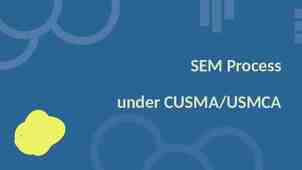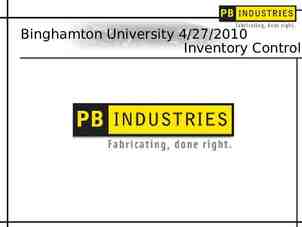Job Analysis The identification and description of what is
23 Slides187.50 KB
Job Analysis The identification and description of what is happening on the job. Why Is It Done ? To facilitate an organizations need to accurately and precisely identify the required tasks, the knowledge, and the skills necessary for performing them, as well as the conditions under which they must be performed. 1
Job Analysis Employers have been forced to demonstrate the validity of human resource policies and practices that affect such activities and actions as: * Recruitment * Compensation * Hiring * Testing * Training * Termination * Promotion * Discipline * Transfers Job analysis is the vehicle used to facilitate this validation process. 2
Getting Started The Activities Involved in Collecting, Analyzing, and Recording Job Data are: »Manpower Intensive (Expensive) »Organizationally Intense (Stressful) It is Imperative that those Responsible for Managing the Process Take the Time Necessary at the Outset to: »Develop an Action Plan »Secure Senior Management's Support »Solicit the Cooperation of the Employees 3
Recommended Planning Steps Job Analysis Determine the Organizational Use of the Job Content Data Collected. Employment Compensation Training Organizational Design Safety and Health Affirmative Action Performance Review Hiring the Handicapped 4
Recommended Planning Steps Job Analysis Review: Learn About the Structure, Operations, and Jobs of the Organization. Mission Statements Work Unit Goals and Objectives Organization Charts Process Charts Procedures Manuals 5
Recommended Planning Steps Job Analysis Identify and Select Methods for Collecting Job Content Data. Interview Questionnaire Observation Diary / Log Combination 6
Recommended Planning Steps Job Analysis Develop a Time and Cost Schedule Schedule the Necessary and Logical Work Steps. What are you going to do? Who is . How are you . Where are you . When are you . 7
Collecting And Describing Job Data Commonly Used Words »Activity A word with broad general meaning that any kind of action, movement, or behavior required of an incumbent in performing job assignments. Generic for function, element, duty, responsibility, and behavior. 8
Commonly Used Words » Major Activity or Responsibility Relates to important or critical area of the job. Taken together major activity statements describe the job. » Function The natural or proper action an individual work unit, mechanism performs. 9
Commonly Used Words » Element The smallest step into which it is practical to subdivide any work activity without analyzing separate motions and mental processes. » Task A coordinated series of work activity elements used to produce an identifiable and definable output that can be independently consumed or used. 10
Commonly Used Words » Duty One or more tasks performed in carrying out a job responsibility. » Behavior The actions an individual takes under certain circumstances. 11
Commonly Used Words » Essential Job Functions An ADA related item. It is an activity that the individual who holds the position must be able to perform unaided or with the assistance of a "reasonable accommodation". 12
Collecting Job Activity Data Begin With the Incumbent The best source of job activity data is the person doing the job this is where you should begin. Remember, at this stage we need to know what the job content is .we will deal with what it should be or what we want it to be a little later in the process. 13
Collecting Job Activity Data Draw a Job Picture This is a mini-organization chart and it is a good starting point for data collection because it requires the incumbent to think of his or her job as it relates to other jobs in the organization. 14
Collecting Job Activity Data Have the Incumbent Identify Major Job Activities. Have the incumbent think about the activities of the job relative to three to five (possibly more) major categories of work. 15
Collecting Job Activity Data Break Each Major Job Category Down Into Specific Duties and Tasks. This involves identifying the specific duties and tasks that, when taken together, constitute all of the key work activities of the major job category. 16
Collecting Job Activity Data Select the Most Appropriate Verb to Describe the Action Taken. *Verb selection requires an effort to identify the word that best describes the activity. *The right verb will tell the reader exactly what is happening on the job and avoids ambiguity. *The right verb - the most appropriate verb must be the one everyone recognizes and understands. 17
Collecting Job Activity Data Select the Most Appropriate Verb to Describe the Action Taken. *The right verb - the most appropriate verb must be the one everyone recognizes and understands. *Beware of jargon .words used by specific occupational groups that people outside the field may be unable to recognize. 18
Collecting Job Activity Data Edit, Edit, Edit, Edit, and Edit. Avoid ambiguous words Use quantitative words when possible Avoid making conclusions, and when selecting words, be consistent in their use. Pages 146 through 149 in your text provide an excellent example of the Job Activity Data editing process. 19
Editing Job Activity Data Are there sufficient responsibilities to cover all of the major areas of the job. Do the duties fit the responsibilities. Is anything missing. Are statements too vague or too specific. Are there an excessive number of responsibilities (7 ) or duties (10 ) 20
Editing Job Activity Data What combinations or subdivisions of duty and responsibility statements are possible Check the verbs. Are they appropriate. Is one verb used too often Clarify deviations. Review the final product with the supervisor and incumbents to ensure that it is: – Factually correct – Easily understood – Complete 21
Collecting Job Specification Data Those Sections of the Job Analysis Questionnaire That Ask for Information On: » Knowledge and Skills Required to perform the responsibilities of the job. » Education and Experience Requirements, including any special licenses, certification, or registrations. 22
Collecting Job Specification Data » Miscellaneous Information Any special knowledge, unique physical demands, and description of working conditions. » Additional Information Input of incumbent with respect to opinions, observations, and recommendations about job design. 23




























